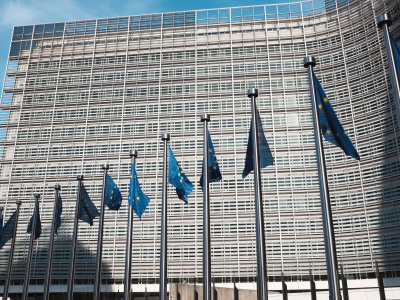
Aid for Trade – Volume 2, Issue 5 (July-August 2013)
Editorial
By San Bilal
The 4th Global Review of Aid for Trade (AfT), taking place at the WTO in Geneva on 8-10 July 2013, is an opportunity to examine how the AfT agenda has progressed so far but also ...
Measuring the Impact of the Global Agenda of Aid for Trade
By Pascal Lamy
Aid for Trade has become a firm part of the vernacular of the trade and development communities. Since it was launched at the 2005 WTO Ministerial Conference in Hong Kong it has ...
Interview with EU Trade Commissioner Karel De Gucht
It must not be forgotten that the EU has been very flexible in the EPA negotiations. The agreements on the table are the most generous we have offered to any partner. But we continue to discuss and fine-tune pragmatic solutions to the remaining ...
Aid for Trade in German Development Policy
By Dirk Niebel
Trade plays a major role for global sustainable development. An open, rule-based and non-discriminatory trade and financial system is an explicit goal of the global partnership for development. Trade can contribute to inclusive growth and ...
Revamping the Aid for Trade Initiative
By Jean-Jacques Hallaert
The Aid for Trade Initiative needs to be revamped. To restore confidence and improve its efficiency, aid for trade should focus more on projects that are clearly related to trade ...
Contribution by the ECOWAS Commissioner for Trade
By Ahmed Hamid
The potential of Trade as an engine for economic growth can only be fully realized by addressing the supply side constraints of Developing Countries, especially in terms of production ...
Enhancing the Regional Dimensions of Aid for Trade
By Bruce Byiers and Dan Lui
Regional Aid for Trade is increasing, but unclear definitions and data hamper any assessment. Addressing challenges in regional coordination and implementation will better enable ...
Connecting to Value Chains
By Erik Solheim
Strengthening the links between aid for trade and private sector development is catalysing greater co-operation and synergies between the public and private sectors to ensure that value ...
Connecting Food Value Chains in Africa
By Eleonora Canigiani and Susan Bingi
While being looked at as the global food basket to address future food security challenges, Africa will need tailored AfT support to connect food value chains, both regionally and ...
Finland is Teaming Up for Supporting Business and Development
By Mika Vehnämäki
The old silos of business and development are breaking down. Finland has introduced a model, “Team Finland”, which has ...
How Private Sector can Aid Agricultural Trade: The Case of Yara
By Natalia Federighi de Cuello
Improved agricultural productivity is vital to meet an anticipated 70 percent increase in food demand by 2050. As the ...
AfT's Impact: How Should We Evaluate?
By Olivier Cadot, Jaime de Melo and Richard Newfarmer
Did the AfT initiative make a difference? It did help to mainstream trade in donor strategies and increase AfT flows. Yet, the initiative was remarkably poor in terms of evaluation ...
Evaluating EU's Trade-related Assistance
By Peter Frøslev Christensen
EU trade-related assistance has been subjected to an independent evaluation, detailing both substantial achievements and continued challenges. While mostly successful, the EU ...
Does Aid for Trade Enhance Export Performance?
By Mariana Vijil and Laurent Wagner
Aid for Trade is intended to boost trade partly through a reduction in internal trade costs. We show that the effectiveness of such assistance as regards to export performance transits ...
Are Donors Assessing the Impact of AfT on Poverty?
By Liz Turner
Although on the whole Aid for Trade (AFT) is good for growth and poverty reduction, behind the averages there may be winners and losers. Yet we find that development partners ...
--
Monthly Highlights from ECDPM's Talking Points Blog
--
--
Read GREAT Insights Volume 2, Issue 5
[gview file="http://ecdpm.org/wp-content/uploads/GREAT-Insights-2-5-Aid-for-Trade-2013.pdf" save="1"]


